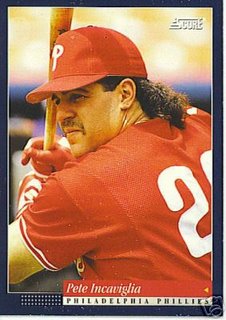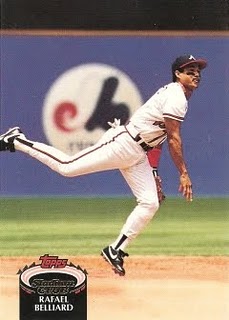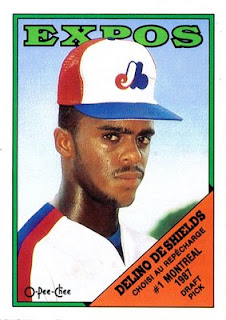The greatest athlete ever.
Why we like him: There has never been a better athlete to walk the earth than Bo Jackson. To me, there's not even an argument about it. He was one of the fastest, strongest, smartest, and charismatic people the world of sports has ever known. His baseball career spanned just eight seasons. Known primarily for his five seasons in Kansas City, Bo also spent two seasons in Chicago with the White Sox, and played 75 games in the 1994 seasons for the California Angels (Remember that?).
Bo finished his career with a .250 batting average, which is honestly a little low, even for the offensively starved 1980s, but his 107 home runs from 1987 to 1990 made him one of the most legitimate power hitting threats in the league. The 1989 season was probably his most impressive, batting .256 with 32 home runs and 105 RBI, and he finished tenth in the MVP race at the age of 26. And by the way, he never really reached his prime because of the hip injury he sustained in the 1991 NFL playoffs.
Like Dale Murphy, if you can't put Bo in the Hall of Fame, there's no point in having a hall. Even the tone people use when discussing Bo Jackson has a sense of reverence and respect you don't even hear when you talk about other athletes.
Here are a list of true facts about Bo Jackson, many of which can be seen on Youtube:
- Scouts frequently said Bo hitting a baseball made a sound they'd never heard before. Older scouts said the only other time they heard it make that sound was from the bat of Josh Gibson.
- Bo once caught a deep drive on the warning track, and instead of crashing into the wall, Bo ran on the wall...for three steps.
- Bo had a propensity for striking out and sometimes broke his bat over his knee or even his helmet as if it was a twig.
- Bo was clocked in the 40-yard dash at 4.12 seconds at the NFL combine.
- With Harold Reynolds, a pretty fast baserunner, on first base, Bo ran down a deep drive to the rightfield corner by Scott Bradley. Bo picked up the ball on the warning track, stood flat-footed and threw a strike in the air to Royals catcher Bob Boone who tagged out Reynolds sliding at the plate.
- Bo routinely hit balls deep into the second fountain at Kaufman Stadium which is listed at 447 feet from the plate.
- When Bo suffered his hip injury in the 1991 NFL playoffs, the Raiders' trainer said, "Bo says he felt his hip come out of the socket, so he popped it back in, but that's just impossible. No one's that strong."
No one except Bo Jackson.
Ladies and gentlemen, Bo Jackson, Ballplayer.




























